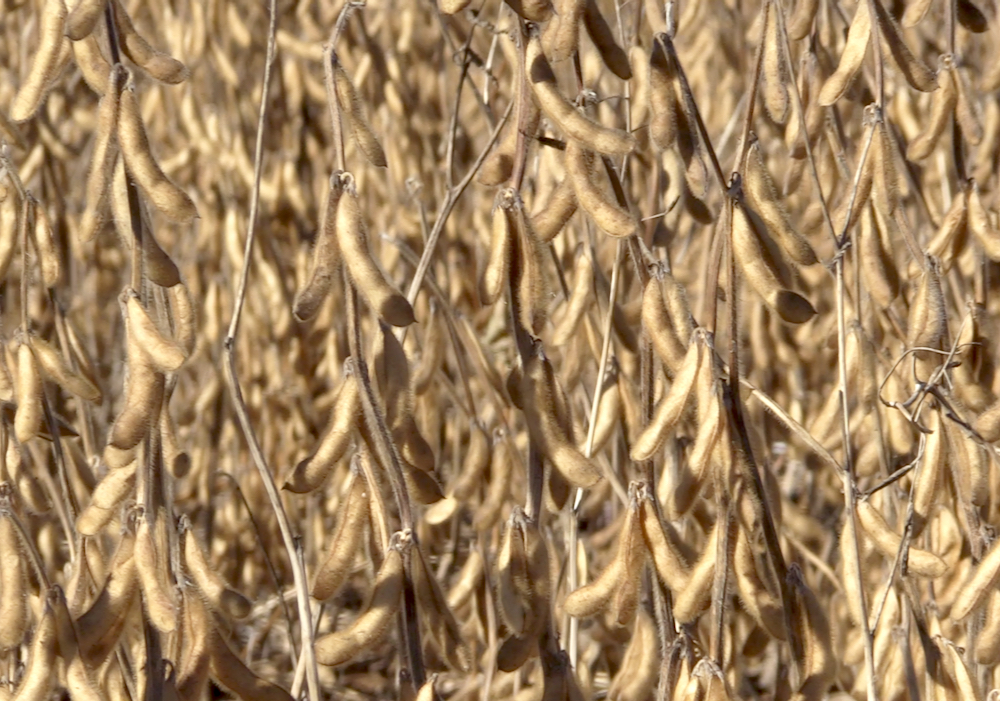(Resource News International) — Water scarcity in Middle Eastern countries may open up good export opportunities for Canadian forage exporters in the coming years, industry sources believe.
While the U.S. and Pacific Rim countries such as Japan and South Korea have traditionally been key destinations for Canadian forage shipments, Canadian companies are hoping to add more Middle Eastern buyers to their list of customers.
Lethbridge, Alta.-based Green Prairie International, a wholesale supplier of forage products, currently conducts the bulk of its business with buyers in Asia and the U.S., as well as the United Arab Emirates.
Read Also

CBOT Weekly: Grain, oilseed futures under pressure
November soybeans lost 23 U.S. cents per bushel during the week, while corn and wheat losses ranged from five to 10 cents.
“We’re pushing really big into the Middle East right now. They don’t have a lot of the water and Saudi Arabia is talking about shutting down their irrigation system, which would open up for another one million tons of forage to go there per year,” said Conway Campbell of Green Prairie’s procurement department.
Whereas Asian markets purchase mainly timothy hay, a high-energy, low-protein grass preferred by animals for its sweet taste, Middle Eastern markets would present opportunities for exports of alfalfa, a protein-rich, high-energy, low-fibre legume.
Due to vast land and water availability, Canada is a leader in alfalfa production.
Glenn Friesen, business development specialist for forages with Manitoba Agriculture, Food and Rural Initiatives at Carman, Man., agreed Middle Eastern markets are growing.
“Typically we feed timothy hay into the Pacific Rim markets. Some of the Manitoba bale plants, though, have shifted into compacted alfalfa/grass mixtures or 100 per cent alfalfa and the markets for that are in the Middle East,” Friesen said.
It will take another year, Friesen estimates, for Canadian exporters to build relationships with buyers and establish a name for themselves there but “if there is a lot of interest and it works out with the target production capacity and prices, I could see 2010 being the big year,” he said.
Inadequate rail containers
The push into the Middle East would help to offset slumping hay shipments to the Pacific Rim, which have suffered as a result of transportation shortages.
The dilemma, which is not unique to the forage industry, has been an inability to secure adequate rail containers to carry forage to the West Coast for shipping.
“There is a lot of world demand for forage but I think our biggest issue here is transportation. We’ve had a heck of a time working with the rail companies to get enough containers, that has been the biggest bottleneck,” Friesen said.
The problem had been growing for the past five years but eased this year as the economic downturn resulted in less container demand, Friesen said.
Some companies though are anticipating a return of transportation headaches once the economy picks up again and are fighting to change rail policies, Friesen added.
In Alberta, Campbell said the company is feeling the effects of having less rail traffic moving through the area. Fewer containers heading into the province mean fewer empty containers are available heading out of province.
“We compete against the U.S. and they import four times as much as they export. So they’ve got a lot of containers and freight rates are usually 20 to 30 per cent less. It has caused big problems for us. This week we will miss 10 to 15 containers because the equipment is not available,” Campbell said.
Friesen anticipates the U.S. and Australia, Canada’s main competitors in the international forage market, will step into the gaps left by Canadian hay exporters in the Pacific Rim.
U.S. hay seen climbing
Another main export destination for Canadian forage in 2009-10 will be the U.S. equine and dairy cattle markets, as is always the case.
The 2009-10 prospective plantings report released March 31 by the U.S. Department of Agriculture pegged 2009 harvested area for all hay at 60.297 million acres, up from 60.062 million in 2008 but down from 61.006 in 2007.
“There will probably be a move back into forage acres in the US but they lost a whole bunch in the last year. The U.S. is predicting an eight per cent climb in acres in 2009 compared to 2008 but they lost about 10 per cent from 2007 to 2008 so it will be about the same as where it was before. I would expect a similar move here in Canada,” Friesen said.
The move back into forage this spring will be tied to lower grain and oilseed prices.
“Last year in February, canola was trading at $17 a bushel. It’s hard to promote timothy at ag shows when the guy beside you is offering $17 canola,” said Campbell.
As of April 3, a producer delivering premium, first-cut timothy hay to Green Prairie International would receive $185 per tonne or $120 for lower grades, Campbell said. Alfalfa was running from $220 a tonne to $145 for bales that had been rained on, with an average price of $180. Round, mixed grass bales cost roughly $45 a bale.
Timothy may stay around the same level this year but alfalfa prices are expected to fall anywhere from $40 to $50 a tonne, Campbell said.
Alfalfa prices rose roughly 40 per cent at the beginning of the year after B.C. dairies “came over here and just paid way too much,” he said.
“They wanted to secure the product and so they threw out a number that they are used to paying and didn’t do any research about where the market was actually at and that hurt everyone else,” he explained.















